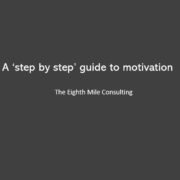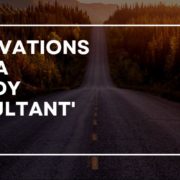When I joined the Australian Army as an Officer Cadet in 2006, my goals were to:
- Lead soldiers into battle,
- Positively influence their lives, and
- Make a positive difference in the world.
Throughout my time in the military my understanding of successful leadership techniques has dramatically evolved from a rigid, authoritative and top-down approach to a more inclusive, group-influenced and adaptive approach. But more importantly my approach to problem solving and decision making is what has potentially evolved the most, and that is what I would like to discuss in this paper.
I once read a book by a late Chinese militarist and philosopher named Sun Tzu, his most famous work being ‘The Art of War’, written to provide context to war and conflict. Originally written to consolidate some of the constants that define war, a large number of its themes can be applied to modern environments, organisations and situations. I found that one particular selection of his quotes stood apart from the rest:
“Military tactics are like unto water; for water in its natural course runs away from high places and hastens downwards. Water shapes its course according to the nature of the ground over which it flows; the soldier works out his victory in relation to the foe whom he is facing. Therefore, just as water retains no constant shape, so in warfare there are no constant conditions.”
– Sun Tzu –
This collection of references has colloquially been referred to, or summarised, as Sun Tzu’s ‘flow like water’ and is often loosely referred to in conversations everywhere. What is of particular relevance from this quote is its application to problem solving.
Throughout my life, I have observed leaders, managers and decision makers preach and assess others against throw away terms such as: flexibility, adaptability, initiative and effectiveness, however I personally do not believe that many individuals fully reach their potential in these areas, not through a lack of trying, but through a lack of awareness.
BYPASS OBSTRUCTIONISM
To apply Sun Tzu’s concept of ‘flow like water’ to problem solving we must first apply its relevance to our modern context by drawing a number of constants. Suppose, that an obstacle, hurdle or obstruction (or worse yet an obstructionist!) is likened to a rock within a flowing stream. Suppose further, that water (under Sun Tzu’s concept) is ever moving, constantly changing and reshaping, and is heading in one direction.
Every one of us has encountered a number of obstructionists throughout our own experiences. Characterised as that one irritable individual who has an inability to think laterally, who begins group conversations with ‘that can’t be done’, and lives happily in a world self-defined by boundaries and corporate governance. In the past I have likened such individuals to the’ Vogon Constructor Fleet’ from Douglas Adam’s ‘Hitchhikers Guide to the Galaxy;’ an officious group of aliens responsible for maintaining the bureaucratic processes of the universe, with no regard for innovation. Please note, when I refer to obstructionists, I do not refer to bureaucratic styled professions, in fact, adaptive thinkers within such job categories have the ability to transform whole organisations by streamlining processes and cutting red tape. I refer primarily to individuals who have turned to the dark side. A team of obstructionists can often lead to toxic relationships, and without fail will hamper an organisation or team’s competitive edge, particularly when delivering projects.
Leaders must be able to identify obstructionists, acknowledge their concerns, and then bypass them in order to ensure that momentum is maintained on overall task/project success. Many a leader has become unstuck by becoming bogged down in obstructionist detail, whilst losing oversight of the original task and purpose. In the Army a term known as ‘marking and bypassing’ is used to explain a procedure by which a team identifies an issue on the battlefield which is outside their scope and capability. This team will then promptly mark it and pass the responsibility to other more specialist teams in depth as opposed to dwelling on the problem. This term can also be applied to explain the process of identifying an obstacle in the workplace, marking its existence and then bypassing it in order to complete the task in time, on budget, and within specifications.
DEVELOP A POSITIVE CULTURE WHICH REJECTS OBSTRUCTIONISM
It is one thing to be able to apply Sun Tzu’s, ‘flow like water’ to your own practices, but how does one influence a team to apply the same forward-leaning, positive approach to problem solving?
Employ the right type of people
If organisations intend to recruit individuals long-term then employ those people that are right for ‘a task’, not necessarily ‘the task’. This meaning, that organisations need to ensure the longevity of their investment (their people), and ensure that when Project A is finalised, the same person might be able to easily transition onto Project B which might have an entirely different scope, stakeholder contribution and design. This is the true meaning of ‘flexibility’ when referring to planning. In practical terms, this might mean that organisations make an assessment on an individual’s potential as opposed to their qualifications. This might also mean that individuals are assessed on whether they are likely to fit the culture of the organisation based on personality, approach to problem solving, and their work ethic. If you have obstructionists in your team, find a way to negate their effects, re-train them, re-assign them (to a better suited role), or worse case remove them completely.
Publicly encourage adaptive and ‘out of the box’ thinking
Leaders must always encourage adaptive thinking by individuals who demonstrate initiative. Ideas and concepts from staff are simply that, nothing more, nothing less – it’s not personal! Furthermore, leaders must be able to identify those contributions that are obstructionist versus those that are complimentary or constructive to the planning process. Positive contributions must be acknowledged publicly to the entire team, and similarly, obstructionism must be identified and as such bypassed or negated. Just remember, you do not need to use everyone’s contributions, but you do need to acknowledge its existence and intent.
Leaders must take risks and accept responsibility
Leaders must apply the principle of ‘risk versus return’. A team which consistently adapts, evolves and adjusts to changing conditions needs to take risks in order to maintain pace with competitors. This ultimately results in higher risk for mistakes. Good leaders must accept the full responsibility for their team’s mistakes, and in return they will receive greater followership and continued involvement from their team. Remember, never blame your team! Also, a successful leader does not blame other areas or departments in order to shift blame and make a common enemy. The most successful leaders I have seen have demonstrated humility and have gone to extensive efforts to provide context as to why other teams within their organisation have made their decisions. Word travels quickly, and this positive gesture may be returned to your team at a later date.
Train your team to be able to plan in the absence of information
Successful and adaptive teams are those that get ahead of the game. They demonstrate the ability to plan in the absence of all the information. They make experience based assumptions that allow them to get to further stages of planning. These assumptions are then either confirmed or denied concurrently, or in subsequent stages of planning. In any case, the team maintains its momentum in the correct general direction. Obstructionists by their nature, feel extremely uncomfortable planning without all the information, and can be seen using it as a means to hamper/halt the planning process – do not let this happen!
In summary, do not be a Vogon! If people provide you with constructive ideas, first think how that information may practicably be utilised to better your cause, or your organisation. If you identify obstructionists, mark and bypass them, to find another way to win, and do not get caught in their detail. Remember, there is always a way to reach an end-state, it might just take a zig-zag path around multiple obstacles to reach it.
Flow like water – Avoiding obstructionism
We have taken many of these lessons and incorporated them into The Eighth Mile Consulting.

 The Eighth Mile Consulting
The Eighth Mile Consulting
 The Eighth Mile Consulting
The Eighth Mile Consulting 
 The Eighth Mile Consulting
The Eighth Mile Consulting  Columbia Pictures
Columbia Pictures  The Eighth Mile Consulting
The Eighth Mile Consulting 
Another great article mate. Solid content that gets you thinking based on the fact that you’ve touched on some important points here.
I love that you always lean on your own personal journey and experiences, really shows the growth you’ve gone through (and are still going through).
Another thing that I really enjoyed about this article is the fact that it’s not always about necessarily solving a problem; at times it can be about working around a problem.
Thank you so much for your thoughts and time in writing these comments. Great that you drew value from it.
As a Veteran I can feel this paper from first to last word without the loss of any punctuation. That thought is that the full meaning is clear to me, as I see it. No enemy in combat is the same, therefore our entire outlook on a situation within the same would be completely different depending on the insertion of one enemy or the other. Therefore, reminding me of this quote, “Empty your mind, be formless. Shapeless, like water. If you put water into a cup, it becomes the cup. You put water into a bottle and it becomes the bottle. You put it in a teapot it becomes the teapot. Now, water can flow or it can crash. Be water, my friend.” – Bruce Lee.
It’s like yoga for the mind. Our thought processes, in a spatial context, surround that which we find as an obstruction to the flow of through or project speak, the overall team goals. To know your enemy better than your friends by conforming to the situation, becoming that situation to gain the understanding of it, leading to overcoming and conquering the beast of burden.
A truly informative writing David. A great and, as usual, thought provoking perspective passing right up my alley. I couldn’t just read it once, so I read it three times. lol. I understood it the first time but it’s one of them papers that are like great movies, you end up watching the several times because you enjoyed it so much the first time. Now, whether one like this or not I say, “Be water my friend”.
Thank you so much for your support, and for taking the time to delve into the detail related to this topic.
We admire your learning spirit.
Safe Travels – The Eighth Mile team